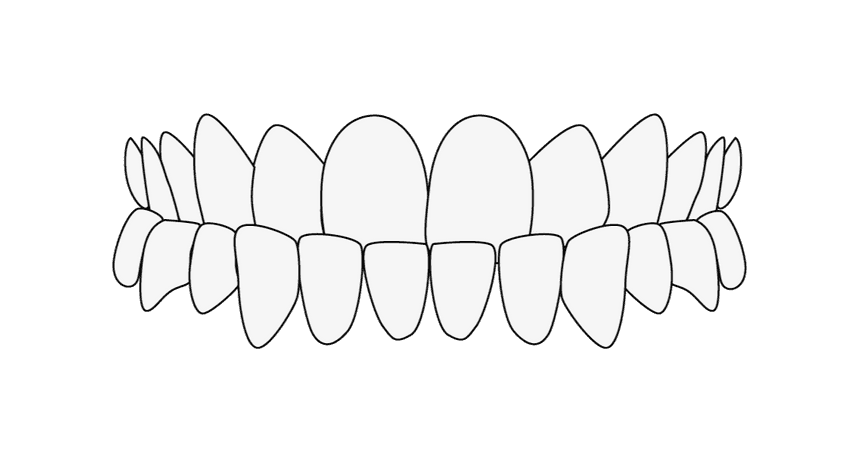
Many people find misaligned teeth unaesthetic. They hide their smiles because they do not feel good about their teeth. However, there are also misaligned teeth that are not very noticeable but can have much severe complications. This is the case when there is a misalignment of the bite. The function of the teeth and jaw is restricted and can make everyday life complicated. In the following article, we will explain what a head bite is, what effects it has on the body and how it can be treated.
What is a head bite?
A head bite is one of three types of crossbite. With a crossbite, the side teeth do not clench together correctly. This means that the side teeth of the upper jaw are either too far in or the side teeth of the lower jaw are too far out. In the head bite condition, the teeth are displaced so that the cusps of the molars and the edges of the anterior teeth meet directly. Normally, the cusps and dimples of the molars mesh perfectly like gears. If this is not the case, the bite is not correct and can cause negative effects.
The consequences of a head bite
If the teeth are slightly misaligned or at an early stage, the impact is still mild and the discomfort is less severe. In complex cases of head bite or if left untreated, the misalignment can cause the following problems:
Overloading and abrasion of the teeth
Inhibition of growth in the upper jaw
Eating problems due to the impairment of the chewing function
Speech disorders such as a lisp
Restriction of nasal breathing
Tension, neck pain, migraines due to pressure on the jaw
To avoid long-term consequences, a head bite should be treated as early as possible.
What is the cause of a head bite?
In rare cases, a head bite can be inherited. In most cases, however, it is the result of a muscular imbalance in the mouth. One reason for the imbalance of the jaw can be a too early or too late eruption of teeth. It can also occur when the tongue does not adequately support the growth of the upper jaw. As a result, the upper jaw does not grow properly and growth disorders occur. A cleft lip and palate can also cause a misalignment, as the upper jaw cannot develop properly due to scarring. External causes such as accidents or thumb sucking can also lead to the development of a misaligned bite.
How is a head bite treated?
To avoid the negative effects of a head bite, early treatment is very important. In the best case, a head bite is treated during childhood because the jaw is still growing and it is easier to correct. Since a crossbite is usually caused by a too narrow upper jaw, it is important to extend the upper jaw during the treatment. In children, this is often achieved with loose or fixed braces. Other options are activators, various active plates, palatal expansion appliances and quadhelixes. If the teeth misalignment is detected at a very late stage and there are severe sequelae, such as problems with speech development, complementary therapies such as speech therapy may also be necessary.
Braces for adults
For a minor head bite, treatment with braces is often sufficient. Aligners from DrSmile are ideal for the treatment of adults, as they are almost invisible and therefore hardly restrict everyday life. The duration of the treatment depends on the initial condition or the degree of misalignment. Minor cases can be successfully treated within a few months. In very complex head bites, the force of the aligner may not be sufficient. There is the possibility of adjusting it with the help of fixed braces. The cost of treatment with clear braces is much lower compared to fixed braces. Whether the treatment with clear aligners is suitable for your misaligned teeth can be determined in a suitability test.
Surgery as the last resort
If the misalignment of the jaw is too pronounced, there is usually no way around orthodontic surgery. Unfortunately, braces are no longer effective in such cases and would only correct the symptoms and not the cause of the head bite. In an operation, the jaw is surgically widened by means of a palatal expansion.